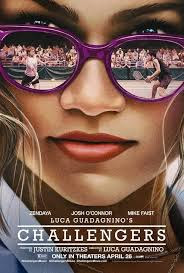Hollywood has always had a
soft spot for movies about presidents. Both satiric comedies and heartfelt
dramas have featured an American president in a leading role. There’s even a
musical—an adaptation of the stage hit 1776—that features the song
stylings of future U.S. presidents John Adams and Thomas Jefferson.
Of all the American. presidents, it is Abraham Lincoln who has earned the most screen time. He’s been portrayed by Walter Huston in 1930; by Henry Fonda (as Young Mr. Lincoln) in 1939; by Raymond Massey in 1940’s Abe Lincoln in Illinois; and by an Oscar-winning Daniel Day-Lewis in 2012’s Steven Spielberg Civil War-era epic, simply called Lincoln. This is not to mention a more eccentric 2012 flick, Abraham Lincoln: Vampire Hunter.
Among 20th century American presidents, the inspirational story of Franklin Delano Roosevelt contending with polio gave rise to 1960’s Sunrise at Campobello. Oliver Stone’s JFK (1991) is less about John F. Kennedy than about the nagging questions behind his assassination. The up-and-down career of Bill Clinton was pseudonymously handled in 1998’s Primary Colors, in which John Travolta portrays a Clinton-like presidential rogue.
Then there’s Richard Nixon, whose checkered presidency has been scrutinized in everything from a biographical drama (1995’s Nixon, starring Anthony Hopkins) to an intimate fact-based post-resignation film (2008’s Frost/Nixon) to a wacky comedy, 1999’s Dick. In all of these settings, there’s a role for First Lady Pat Nixon, but she’s always a peripheral character.
That remains true of most First Ladies. Moviemakers are not terribly interested in their stories, except as they intersect with their husbands’ moments of high drama. (The one big exception is Jacqueline Kennedy, whose post-White House life as the tragic young widow of JFK confirmed her movie star potential. Natalie Portman portrayed her in 2016’s Jackie, earning herself an Oscar nomination.)
I don’t think anyone is about to make a movie with Patricia Ryan Nixon at its center. In her lifetime (1912-1993), Pat was known as the spouse of Dick Nixon, as an apparently prim and proper helpmeet good at smiling and waving. But my friend and colleague, Heath Hardage Lee, has recently published a biography that turns the spotlight on someone who preferred to remain in the background. Lee’s book, The Mysterious Mrs. Nixon: The Life and Times of Washington’s Most Private First Lady, was recently named to the longlist for Biographers International Organization’s prestigious 2025 Plutarch Award. This well-researched biography explores Pat Nixon’s many appealing qualities—her personal grit, her great skill as a goodwill ambassador roaming the world on the nation’s behalf, her strong commitment to preserving her country’s history and institutions. There’s also, eventually, some revelations about the way her husband’s shadier aides tried—in the second Nixon term—to curb her enthusiasm for the First Lady’s traditional mandate to further her spouse’s White House goals. To read about Pat’s efforts to enhance the role of women in American government and on its courts is to be impressed by a First Lady who was in some ways well ahead of her time.
Heath Lee’s book, which contains the fruits of interviews with many Nixon aides, friends, and family members, portrays its subject as a woman well worth knowing, even by those who were not fans of her husband’s politics. One of many surprises: Pat and Dick had a cordial and long-lasting relationship with Jack and Jackie Kennedy, both before and after the brutal 1960 presidential race that set them against one another. What I learned in reading The Mysterious Mrs. Nixon is that it’s fascinating to read about the woman who willingly stood behind the famous man.













